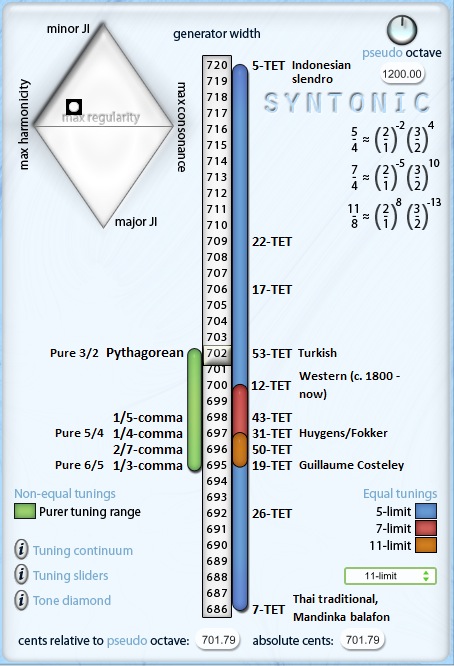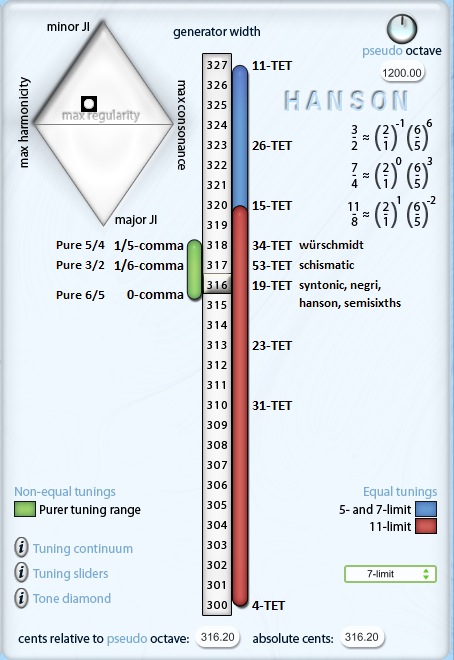

Ordinal Tuning RangesThe TransformSynth divides the entire 2-D tuning continuum into a number of independent smaller tuning continua. Each continuum is named after a comma (e.g, Syntonic, Magic, and Hanson), and each has a range over which familar intervals remain well ordered.Selected Intervals in 5-limit Just Intonation
In any tuning continuum, each of these intervals is tempered to a value defined by the generators. The range of generator values over which the order of the primary consonances remains unchanged is defined to be the ordinal tuning range of that continuum with respect to the primary consonances. The 5-limit ordinal tuning range, shaded blue in each of the tuning continua, is the range over which the tempered versions of the above just intervals remain in the same size order. For example, in the Syntonic tuning slider, the interval representing a minor third is always smaller than the interval representing a major third. They are equal in size only at the bottom of the slider where the tuning is 7-TET. Similarly, the interval representing a major third is always smaller than the interval representing the perfect fourth. In this case, they become equal at the top of the slider where the tuning is 5-TET. Outside of this range, the normal ordering of the intervals is perturbed. 


The 7-limit ordinal tuning range, shaded red, is derived in the same way as the 5-limit except that it ensures that the tempered intervals representing the JI intervals found in the 7-limit prime chords (4:5:6:7 and 1/4:1/5:1/6:1/7) maintain their ordinal step size. Similarly, the 11-limit ordinal tuning range, shaded orange, is the range over which the tempered intervals representing the JI intervals found in the 11-limit prime chords maintain their ordinal step size. Higher-limit ordinal ranges are generally narrower than lower limit ranges (as can be seen in the Syntonic slider, where each successive limit covers a smaller tuning range), but when two or more limits have the same ordinal range they are shown in the colour of the lowest limit included. The main tuning slider changes the size of the generator, which has a consistent effect on the size of all intervals in the tuning continuum. The slider affects the tuning of all intervals and the size of every step in the scale. Scale steps exhibit consistent and patterned behavior in the diatonic setting. |
©2008 William Sethares; site design by Anthony Prechtl |